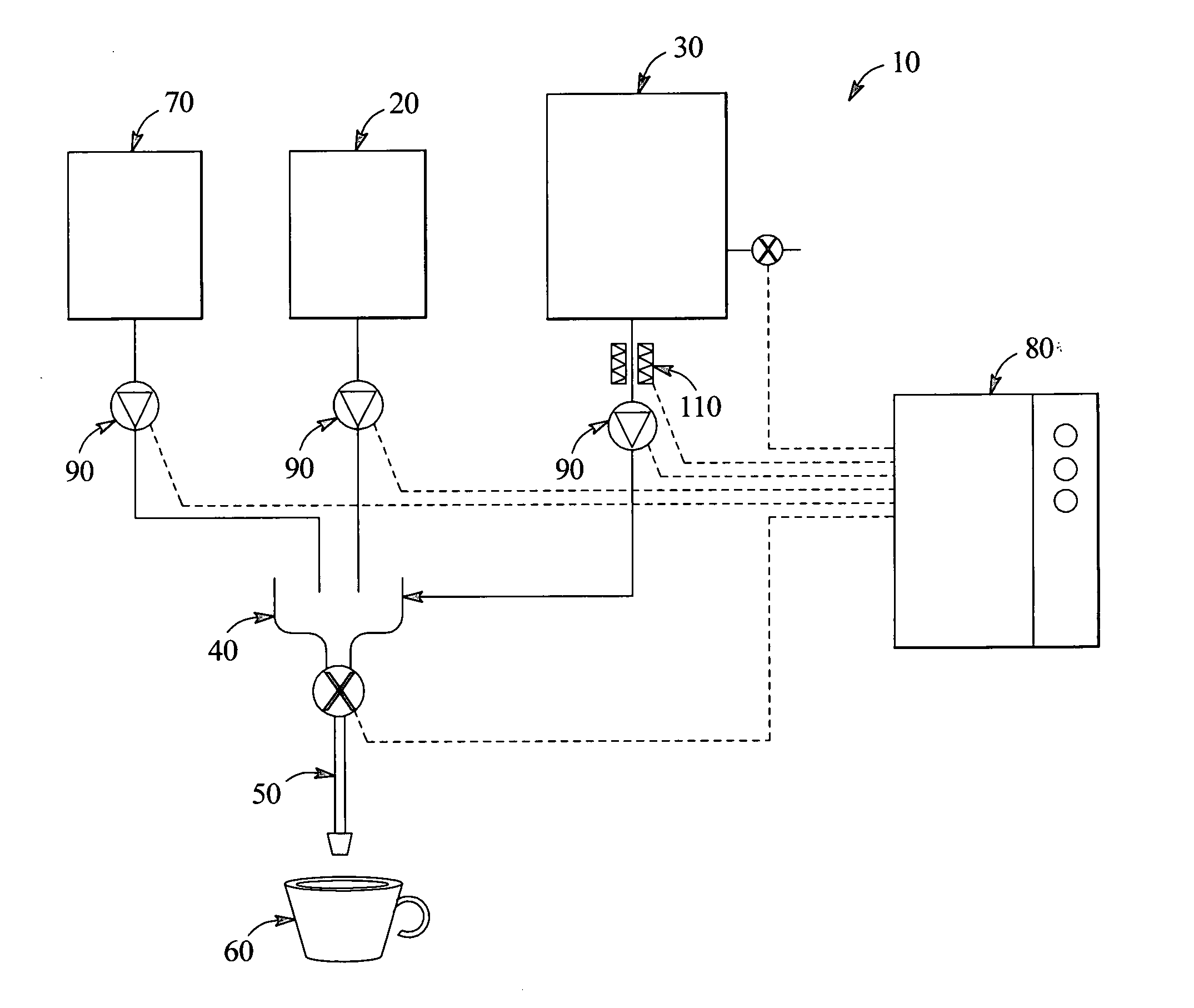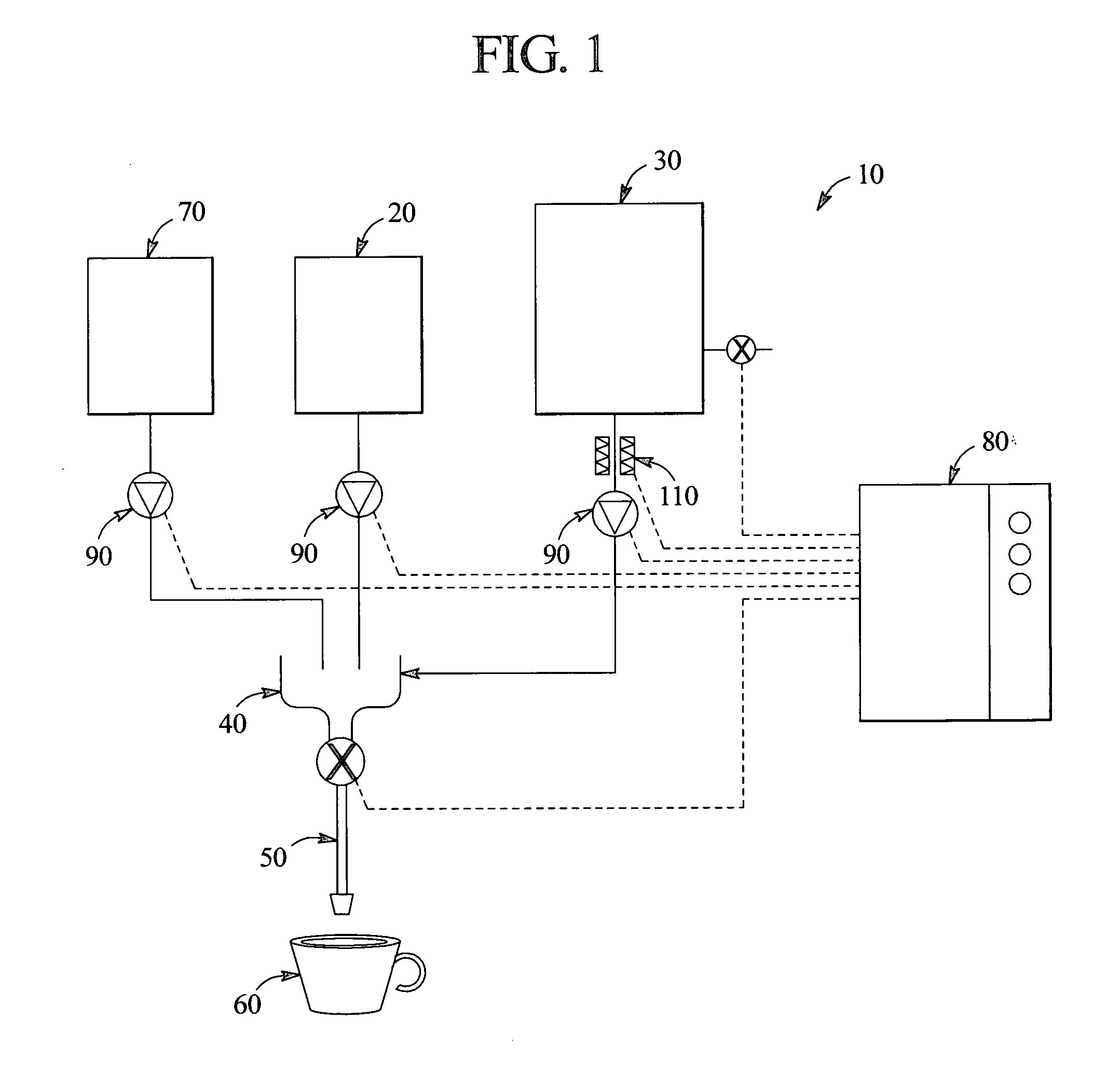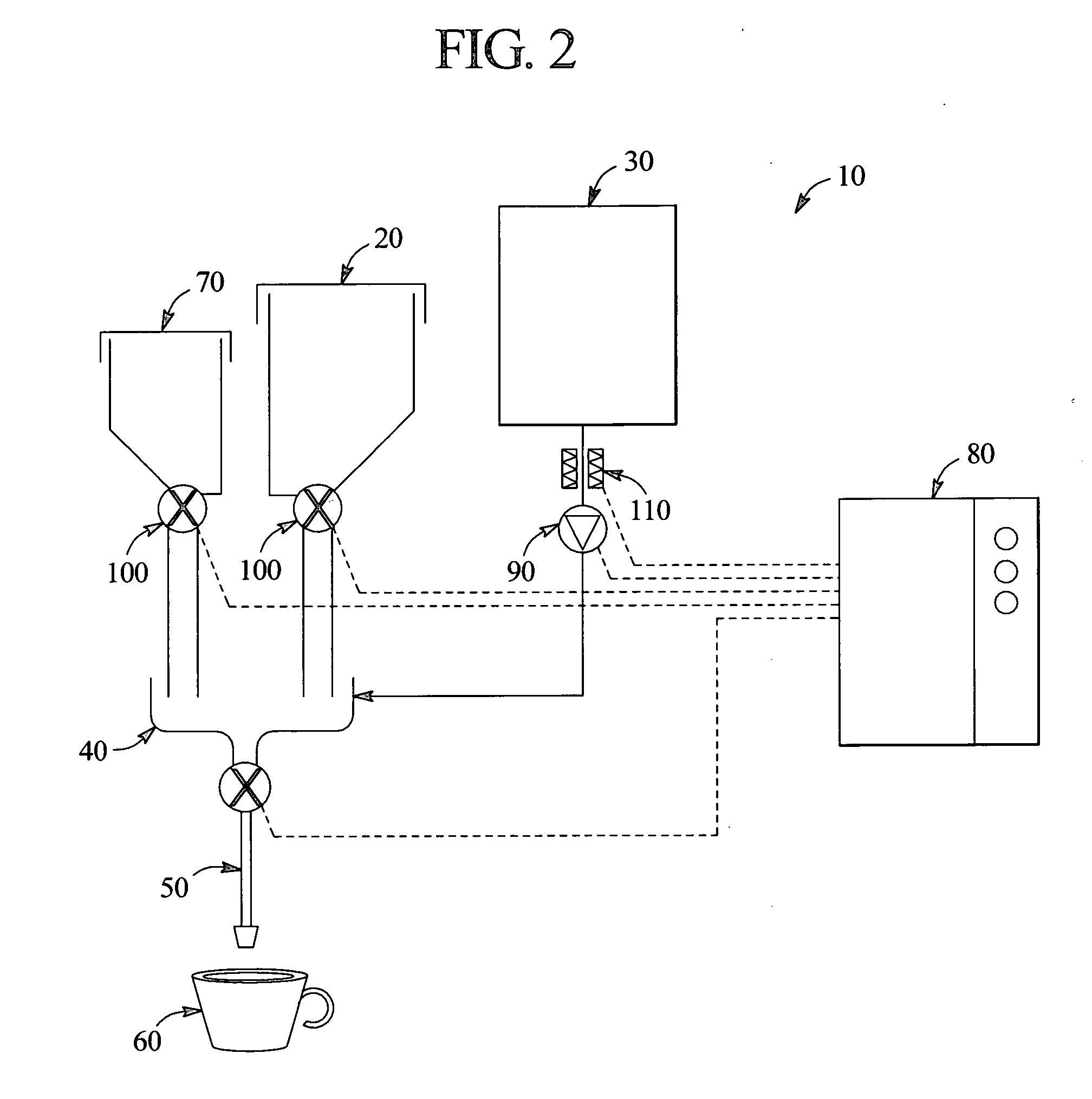Methods and systems for delivering foamed beverages from liquid concentrates
- Summary
- Abstract
- Description
- Claims
- Application Information
AI Technical Summary
Benefits of technology
Problems solved by technology
Method used
Image
Examples
example 1
Baseline
[0074] A Cappuccino type beverage was prepared using a dispenser system from milk and coffee concentrates. As illustrated in FIG. 5, a Cappuccino (reference) was prepared using the following procedure:
[0075] water flowrate of 18 g / s, dosing time from 0 to 15 s;
[0076] milk concentrate flow rate of 9.75 g / s, dosing time from 0 to 8 s;
[0077] coffee concentrate flow rate of 2.5 g / s, dosing time from 9 to 12 s.
[0078] Disk whipper (at 14,000 r.p.m.) was in on-mode from 0 to 10 s. The Foam to Liquid Ratio (FLR) determined after 1 minute was 0.39, FLR after 3 minutes was 0.32 and FLR after 10 minutes was 0.27 as shown in FIG. 3. The foam stiffness was measured after 2 minutes from dispensing by using plastic spheres of known density and diameter. One sphere was gently placed on the surface of foam in the cup, and the time taken to disappear was monitored. The foam stiffness was found to be 6+ / −1 sec as illustrated in FIG. 4. The total delivery time was found to be 18 s.
example 2
Foam Stability and Stiffness
[0079] To improve foam quantity and stability, a cappuccino beverage was prepared using a dispensing system as in Example 1, but milk flow rate was decreased from 9.75 g / s to 7.4 g / s from 0 to 7 s and increased to 8.6 g / s from 7 to 10 s as shown in FIG. 6. Water flow rate and whipper time were kept constant. FLR data and foam stiffness are presented in FIGS. 3 and 4. Approximately 18% and 15% improvements over the baseline in amount of foam was found after 3 and 10 minutes, respectively.
example 3
Foam Stability and Stiffness
[0080] To improve foam quantity and stability, a Cappuccino beverage was prepared using a dispensing system as in Example 1, but milk flow rate was decreased from 9.75 g / s to 7 g / s from 0 to 5 s and increased to 8.6 g / s from 5 to 10 s as shown in FIG. 7. Water flow rate and whipper time were kept constant. The FLR determined after 1 minute was 0.42, after 3 minutes was 0.37 and after 10 minutes was 0.31. Approximately 18% and 15% improvements over the baseline in amount of foam was found after 3 and 10 minutes, respectively. Foam stiffness was also improved over the baseline from 6+ / −1 to 13+ / −1 s.
PUM
 Login to View More
Login to View More Abstract
Description
Claims
Application Information
 Login to View More
Login to View More - R&D
- Intellectual Property
- Life Sciences
- Materials
- Tech Scout
- Unparalleled Data Quality
- Higher Quality Content
- 60% Fewer Hallucinations
Browse by: Latest US Patents, China's latest patents, Technical Efficacy Thesaurus, Application Domain, Technology Topic, Popular Technical Reports.
© 2025 PatSnap. All rights reserved.Legal|Privacy policy|Modern Slavery Act Transparency Statement|Sitemap|About US| Contact US: help@patsnap.com



